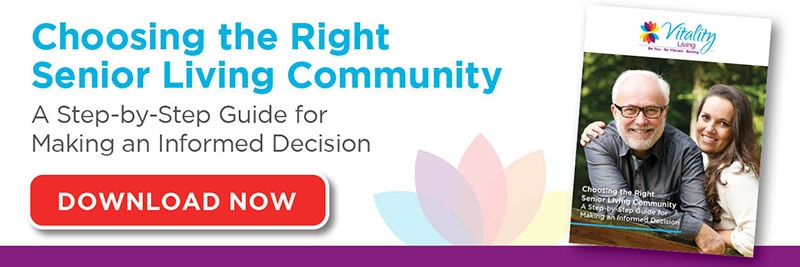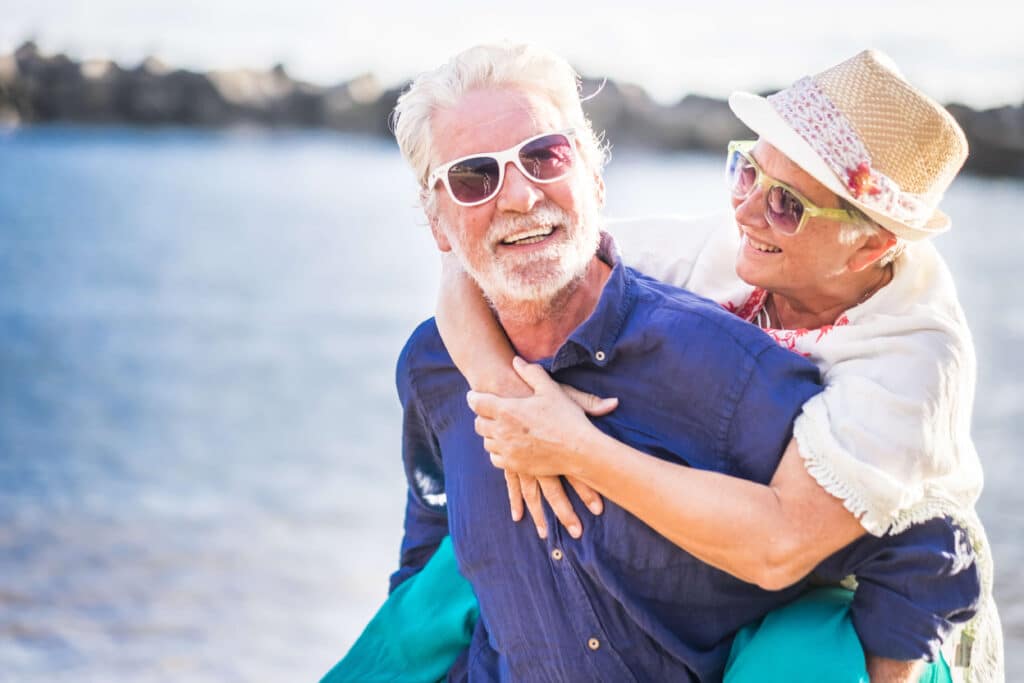What do active seniors and senior living possibly have in common? Way more than you may think! To start, there are two types of senior living designed just for you: independent living and assisted living. What’s more, they both, like you, are focused on making the most of life. Learn more about each option and whether independent living vs. assisted living is right for you.

Your Accommodations
Independent living typically offers a wide range of accommodations from condominiums and apartments to even free-standing cottages in some communities with several floor plan options for each as well. This type of senior living is designed to have more of a neighborhood feel with the privacy you want, yet the convenience of being near common areas and amenities.
Assisted living typically offers private or semi-private apartments although there is often a variety of different floor plans from which to choose as well. Accommodations are spacious and well-appointed, and this type of senior living features more of a group setting that’s centered around common areas and amenities.
Both independent living and assisted living give you freedom from the stress of chores with housekeeping as well as home and yard maintenance included in your monthly fee. Some utilities may even be included.
The Lifestyle
Independent living is all about, well, independence, of course! You’ll enjoy carefree living and a multitude of options in which to spend your time. The ever-changing monthly calendar is chock full of social activities, outings, classes, clubs, fitness, and wellness opportunities. It’s why so many active seniors are choosing these communities in which to spend retirement, even while perfectly healthy. Not to mention the beautiful grounds and resort-style amenities such as dining venues that include a bistro, pub, and restaurant, as well as concierge services, a pool, fitness center, library, and onsite salon and spa.
You may be surprised to learn that assisted living offers a lifestyle very similar to independent living. There are planned social, fitness, and recreational activities as well as similar amenities including restaurant-style dining, a fitness center, onsite salon and spa, and transportation. It’s a warm, inviting setting with all the comforts of home plus some added peace of mind!
Daily Support in Independent Living vs. Assisted Living
This is where the main difference comes in between independent living and assisted living: supportive services. In independent living, typically onsite medical care is not offered. So, if you need daily support with personal care and/or have chronic health conditions that require ongoing assistance these communities may not be the best fit. That being said, while independent living communities may not provide healthcare and assistance directly, you may opt to use third-party home health services for those needs.
On the other hand, assisted living communities do offer supportive services to help with personal care and daily tasks. These communities also feature onsite care with 24-hour supervision. The idea is to provide just the right amount of support to empower independence which is why there are still so many opportunities to stay active, social, and engaged in assisted living.
What’s more, many senior living communities offer both independent living and assisted living on the same campus, which really is the best of both worlds as you could retire to independent living initially then, should your health needs evolve, you can easily transition to assisted living later while remaining in the same familiar surroundings.
Check out our Guide to Choosing The Right Senior Living Community and learn more about independent living vs. assisted living. Or, contact us today to schedule your virtual tour!



